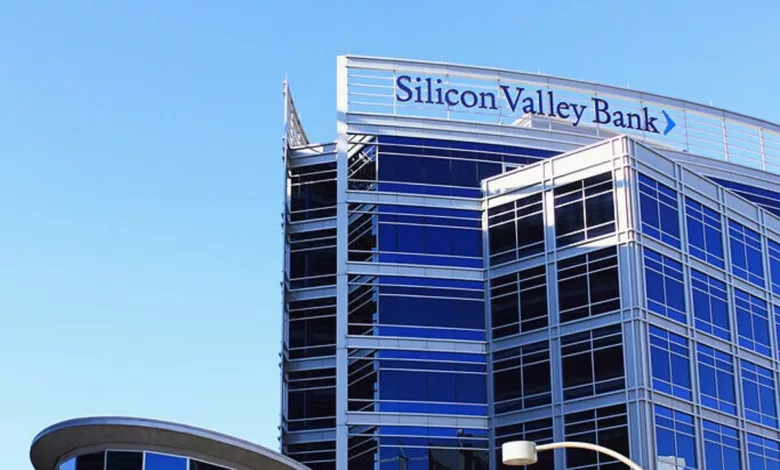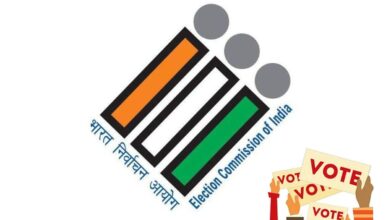Silicon Valley’s Darkest Days: The Rise And Fall Of A Once-Prominent Bank.
The sudden demise of Silicon Valley Bank shocked the startup world, which had come to rely on the lender as a trustworthy funding source, especially for some of the largest moonshots in technology.

Silicon Valley’s Darkest Days: The Rise and Fall of a Once-Prominent Bank.
US banking regulators shut down SVB Financial Group on March 10, 2023, placing the tech-heavy lender into receivership. They acted swiftly to protect depositors as a crisis spread worldwide and hurt banking stocks.
The sudden demise of Silicon Valley Bank shocked the startup world, which had come to rely on the lender as a trustworthy funding source, especially for some of the largest moonshots in technology.
According to sources, the bank was looking to sell, and after its shares fell 60% late on Thursday, trade in them was suspended. The decision by the US Federal Reserve to increase interest rates and dampen investor risk appetite is what led to the closure of SVB Financial Group Inc. and the banking regulators’ takeover of the company on Friday.
![]()
Due to its reputation for placing bets on startups that larger banks may find much too risky and that may have had little chance of survival otherwise, the bank has played a crucial role in the formation of numerous early-stage enterprises. Over the years, it has had financial ties to a who’s who of Silicon Valley companies, including Snap Inc., the parent company of Snapchat.
When and why the SVB crisis hit?
California regulators shut down the troubled lender on Friday, placing it under the supervision of the US Federal Deposit Insurance Corporation (FDIC).
The overnight shock followed another steep 60% decrease in premarket trading for SVB’s stock as anxious depositors hurried to withdraw money, which caused the decline.
After an unsuccessful fundraising effort, the SVB Financial Group attempted to sell itself, but to no avail, as deposits were “very swiftly” withdrawn. The organization even instructed its staff to work remotely until further notice as the problem developed.
The FDIC recognized its designation as receiver immediately after the California Department of Financial Protection and Innovation closed SVB. It’s worth noting that SVB is the first FDIC-insured bank to fail in over two years. The series of events that resulted in Silicon Valley Bank’s failure is as follows:
Rate increases by the Federal Reserve
To fight inflation, the Federal Reserve has been raising interest rates since last year. Before that, they were at a record low. When rates go up, investors are less willing to take risks because the money they can use is more expensive. This made investors less willing to take risks, which hurt tech startups, which were Silicon Valley Bank’s leading clients.
Several Silicon Valley Bank clients are struggling financially.
Numerous Silicon Valley Bank customers withdrew funds to satisfy their liquidity needs when the IPO market dried up for many companies, and private fundraising became more expensive due to rising interest rates. Thus, Silicon Valley Bank started looking for ways to deal with consumer withdrawals this week.
Bonds from Silicon Valley Bank’s portfolio are sold at a loss.
Silicon Valley Bank sold a $21 billion bond portfolio on Wednesday, the majority of which were US Treasury bonds, to pay for the redemptions. In contrast to the current yield on the 10-year Treasury, which is about 3.9%, the portfolio only yielded an average of 1.79%. SVB was compelled to record a $1.8 billion loss, which it had to make up by raising capital.
SVB reports a stock sale.
SVB disclosed on Thursday that it would raise $2.25 billion by selling preferred convertible stock and common equity. Investors worried that the deposit withdrawals might force it to seek even more cash, which caused its shares to conclude the day’s trading down 60%.
Breakdown in stock market sales.
According to sources, several SVB clients withdrew their funds from the bank on the advice of venture capital firms, including Peter Thiel’s Future Fund. The capital raising effort failed late on Thursday due to investors, including General Atlantic, who SVB had lined up for the stock sale, being alarmed by this.
SVB is placed under receivership.
On Friday, SVB hurriedly sought out new funding, primarily through the sale of the company. However, later that day, the FDIC announced that SVB had been closed and turned over to its receivership. The FDIC has declared its plan to sell the assets of SVB and the possibility of future dividend payments to uninsured depositors.
Since 2008, the largest US bank has failed.
With Washington Mutual’s demise at the height of the 2008 financial crisis, the Silicon Valley Bank incident ranks as the second-largest US commercial bank failure.
Washington Mutual was the most significant savings and loan association bank in the States prior to its demise. Also, the FDIC put it into receivership, and JP Morgan Chase bought it in the end.
Several major investment banks, including Washington Mutual, Lehman Brothers, and Bear Stearns, have recently collapsed, and several smaller and medium-sized regional banks led to a crisis in the banking system as a whole.
Global concern has already resulted from the crisis at SVB Group, doing business as Silicon Valley Bank, because it triggered a little contagion that damaged banking and financial shares elsewhere.
Several of the world’s largest banks and financial institutions, particularly those based in the United States and Europe, have incurred considerable losses since SVB announced its plan to raise money. European banks took a hit Thursday when JPMorgan and BofA stock plunged more than 5%.
Due to the likelihood that shares of important banks and financial organizations may have negative repercussions from SVB’s failure, the closure might have a large influence on stock markets worldwide, including those in the US, the UK, the Eurozone, etc., and others. Many people worry that the collapse of SVB might potentially lead to a situation resembling the financial crisis of 2008.
How likely is it to cause a financial meltdown?
Whether it will affect larger industries in the US and others is still up for debate. This is because, after the 2008 financial crisis, American banking laws became much harsher, notably in the case of larger institutions like JP Morgan Chase, Bank of America, Citi Bank, Wells Fargo, and others.
SVB was the 16th-largest bank in America as of last year, with assets of $209 billion. Unfortunately, regulators that apply to SVB are not as strict as they are to the largest US banks because it is significantly smaller.
The regulatory monitoring permitted SVB to invest aggressively when interest rates were low without preserving adequate reserves to meet the kind of crisis it encountered before it was shut down. Several other mid-sized institutions started to feel the heat after its collapse, and their shares also dropped.
Yet, some of the largest American banks, including JP Morgan, Wells Fargo, and CitiGroup, saw an increase in their share prices, suggesting that the collapse may not have had as much of an effect as previously thought.
While the SVB crisis-fueled contagion caused US stock indices to decline, most analysts believe that this is a company-specific issue that will not have a cascading effect. Even while it might not significantly affect American banking and financial institutions, it serves as a warning to banks holding unrealized losses.
The SVB issue, according to David Trainer, CEO of New Constructs, an investment research firm, illustrates that businesses, especially banks, need to be considerably more selective about who they do business with.
“When the bear market started in January 2022, companies without any business strategy were punished by the market, and SVB’s problems are just the most recent example. The market is sick of companies who partner with or are themselves unprofitable businesses.”
“In light of SVB’s difficulties, we do not think there is a risk of contagion for the rest of the banking industry. The central banks have a far more varied deposit base than SVB, and their financial standing is strong, “Added he.
JP Morgan analysts concur with Trainer and think the sell-off was “overdone” because big banks have much more liquidity than little banks. Bigger banks have more extensive business strategies, more diversification, substantial capital, and intense regulatory scrutiny.
Due to strong liquidity situations and substantial, diversified deposit funding, our banks won’t be conducting a fire sale of securities, unlike other smaller banks, according to JP Morgan analysts. Nonetheless, most analysts believe that global markets’ banking and financial stocks may see significant volatility soon.
Who will thereby suffer the most from the SVB crisis?
The uninsured investors in SVB, who have stored sizable sums with the bank, are increasingly anxious. These depositors, including numerous startups, VC firms, and tech firms,, will now have to wait and see how things develop.
The FDIC said that the amount of uninsured deposits at the bank is still unknown. This is likely because customers rushed to get their uninsured money out of the bank in the last 48 hours as the crisis worsened. Yet, the bank told the FDIC that 89% of its $175 billion in deposits were not insured.

The money will be available by Monday morning for insured depositors, but for uninsured depositors, who will acquire a “receivership certificate,” the process may take a while and be complicated. As the bank’s assets are liquidated, the FDIC also stated that future dividend payments “may be made” to settle uninsured money.
Because of this, thousands of uninsured depositors, most businesses that need cash on hand for payroll and other expenses and not just private people, may have serious worries. So, even if the SVB problem doesn’t turn into a full-blown financial disaster, it has still put a lot of people’s jobs at risk.
What do we learn from this?
Which banks miscalculated the fit between the cost and longevity of their deposits and the yield and duration of their assets will be one of the key concerns arising from this. This is substantially different compared to the loan issues that plagued the 2008 financial crisis.
Purchasing the shortest-term Treasurys or keeping the cash on hand would have protected banks from the risk of rising interest rates when money poured into them during the pandemic. But, it would have also reduced their income. This time around, the banks’ search for “safe” yield could come back to haunt them.
Edited by Prakriti Arora







